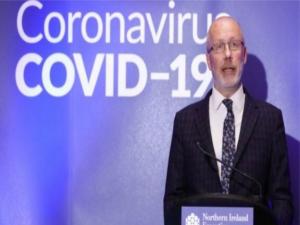
by David Young and Rebecca Black, PA
Northern Ireland would have witnessed thousands of Covid-19 deaths if no action had been taken to suppress the virus, Stormont’s chief scientific adviser has said.
Professor Ian Young’s stark assessment came after the devolved Executive in Belfast agreed to a sweeping new lockdown, which will come into force on Boxing Day and last six weeks.
The first week of those measures will see the toughest lockdown yet introduced during the pandemic, with a form of curfew in operation from 8pm with shops closed from that time and all indoor and outdoor gatherings prohibited until 6am.
Non-essential retail will close throughout the six weeks, as will close contact services. Hospitality outlets will be limited to takeaway services.
Organised sport will be also be banned, with elite sport included in the prohibition for the first week.
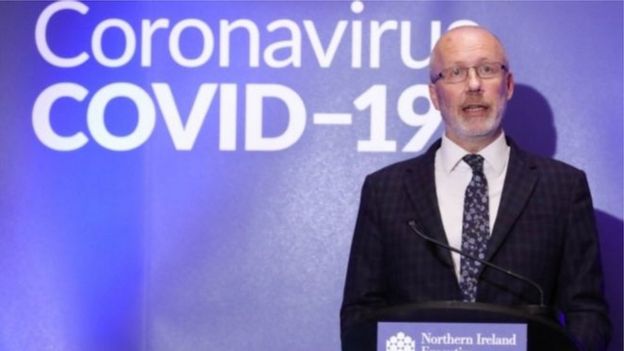
Professor Ian Young - addressing a previous Stormont press conference
Prof Young said the region’s already over-capacity health service would have been completely swamped in January if no action was taken.
“Of all of the things that we look at in terms of modelling, the number of deaths is the one that is most difficult to predict. It would, if no action were taken – which is inconceivable – have been very large, certainly within the thousands, if no action was taken,” he said.
Prof Young told BBC Radio Ulster that the current number of Covid-19 inpatients of between 400 and 500 would have soared to between 3,000 and 4,000 by the end of January if no action had been taken.
“In terms of the total number of general and acute beds, the type of beds that would have been required in hospital, the number of patients needing beds would have exceeded the total number of beds that were available,” he added.
After Thursday night’s lockdown announcement, Stormont ministers are facing calls to provide clarity on schools reopening after the Christmas holidays.
The Executive delayed a decision on schools at the meeting on Thursday when ministers agreed to introduce the fresh restrictions on other sections of society.
Education and health officials have instead been tasked to engage on potential options to reduce face-to-face school time in the new term.
One option is a potential staggered return to the classroom after Christmas, with some year groups going back earlier than others.
Teachers and parents have demanded answers so they can plan for January.
Particular concerns have been raised about the prospect of primary age children from several schools mixing when they gather to take tests set as part of an academic selection transfer process used by some secondary schools.
While January’s tests are conducted by private companies, the Department of Education has ultimate responsibility for ensuring school settings are safe.
National Association of Head Teachers president in Northern Ireland Graham Gault criticised the Executive on Friday morning.
“Principals and teachers need clarity on what the beginning of term will entail,” he tweeted.
“Schools can’t turn things around overnight.
“Unfortunately, a lack of understanding has been the hallmark of decision-making through this pandemic, with schools being the last to know at every turn.”
Principals and teachers need clarity on what the beginning of term will entail. Schools can’t turn things around overnight.
— Graham Gault (@drgrahamgault) December 18, 2020
Unfortunately, a lack of understanding has been the hallmark of decision making through this pandemic, with schools being the last to know at every turn.
Let’s not forget where responsibility for our Year 7s’ situation lies.
— Graham Gault (@drgrahamgault) December 17, 2020
We have been asking for a Plan B for these children for nine months.
That our children are facing this reality is an enlightening indictment on a system that simply could not or would not move.
Prof Young said a “wide range of options” regarding schools has been provided to the Executive.
“Schools don’t have to be open or closed, there are lots of inbetween things – staggered opening, I think, would be clearly included as one of those possibilities,” he said.
Northern Ireland’s reproduction number (R) is currently between 1.1 and 1.2.
A further 12 deaths involving Covid-19 were reported on Thursday, along with another 656 new cases of the virus.
The hospital occupancy rate stood at 104%.
On Tuesday, queues of ambulances were witnessed at accident and emergency departments (EDs) across Northern Ireland as patients were treated in car parks due to a lack of capacity inside hospitals.
At one point, 17 ambulances containing patients were lined up outside the ED at Antrim Area Hospital.
On Friday, Health Minister Robin Swann said the lockdown would lay a “strong and deep foundation” for the fight against Covid-19 in 2021.
“It’s something that was necessary, it is the toughest restrictions we’ve brought in yet, but, at this time of the year, just where coronavirus is, they were necessary to try to get back on top of it the way we did at the start of the year, so we can get the benefit that is actually coming out of the vaccine that we’ve started to deploy,” he told BBC Radio Ulster.
"Between 400-450 covid inpatients are being supported on a daily basis, which is taking up a large part of our hospital footprint". @RobinSwannMoH tells @SkyNews that number hasn't decreased since the ;last intervention. pic.twitter.com/4c2vdeKVqP
— Q Radio News (@qnewsdesk) December 18, 2020
The Christmas bubble arrangements that allow three households to come together for five days over the festive period are not affected by the new lockdown measures.
Mr Swann defended the Executive’s decision not to implement the lockdown sooner than Boxing Day.
He said it would have seen people trying to squeeze activities such as shopping into a shorter period of time, which would have resulted in more interaction and a greater spread of the virus.Ch


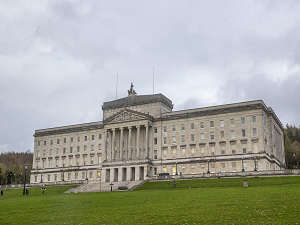 Executive will ‘have to deal’ with compensation costs from PSNI data breach
Executive will ‘have to deal’ with compensation costs from PSNI data breach
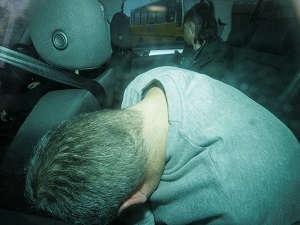 Man remanded in custody charged in connection with mosque burning plot
Man remanded in custody charged in connection with mosque burning plot
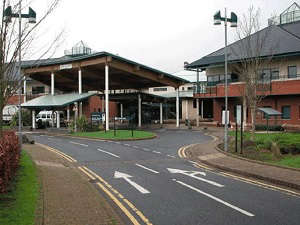 Woman charged over breaches at abortion safe access zone
Woman charged over breaches at abortion safe access zone
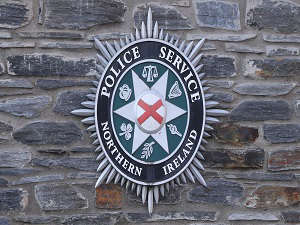 Two arrested after arson attack on house in Clogher
Two arrested after arson attack on house in Clogher
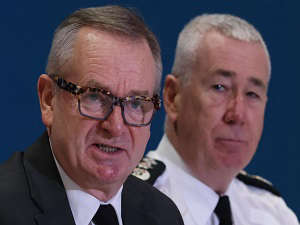 Late release of MI5 Stakeknife files a ‘significant failure’, report says
Late release of MI5 Stakeknife files a ‘significant failure’, report says